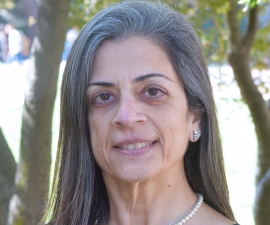

Research Bio
Dynamics of Fe and Cu metabolism
Plants require CO2, water, sunlight and a few minerals for growth and survival. Carbon contributes to biomass and sunlight is the energy source. The mineral requirement includes elements, found only at trace levels, like Fe, Zn, Cu and Mn, that enable the catalysis of an amazing repertoire of reactions, especially in the photosynthetic apparatus where biology’s most powerful oxidants and reductants are found. This structure is rich in metalloproteins and contributes to the high metal quota of some photosynthetic cells. Environmental factors can limit the availability of metals, especially Fe, but also Cu and Zn, and this naturally impacts photosynthetic performance and hence global primary productivity. The Merchant group has discovered mechanisms used by photosynthetic organisms to optimize performance in face of changing metal supply, especially limitation. Reduce, reuse and recycle! For instance, the Cu quota is dramatically reduced (to less than 5% relative to a Cu replete situation) by replacement of the copper-protein plastocyanin in photosynthesis with a functionally equivalent heme-containing cytochrome. This occurs through the action of a copper sensor and a transcription factor that recognizes copper response elements associated with the CYC6 gene. In parallel, plastocyanin is degraded, releasing the Cu cofactor, which is re-used for the biosynthesis of respiratory chain cytochrome oxidase. Similarly, Fe is recycled by degradation of ferredoxin to support the synthesis of an Fe-containing superoxide dismutase. The risk associated with the dynamics of metal ion metabolism is reduced by intracellular storage of these metals in a lysosome-related organelle. In ongoing work, the Merchant laboratory uses elemental and protein mass spectrometry in combination with live cell imaging of metal sensors, state of the art nano secondary ion mass spectrometry and X-ray fluorescence microscopy that offer high spatial resolution, and classical genetics to discover and dissect the biochemistry of the metal storing compartment.
Supported by NIGMS and DOE
Comparative genomics of algae
The Merchant group is also taking advantage of genome-sequencing based approaches for discovery of new components and functions related to photosynthesis and chloroplast biology. The group has amassed the largest collection of RNA-Seq data for Chlamydomonas and we are presently creating co-expression networks with a view to deducing the functions of the many unannotated and uncharacterized proteins encoded in the algal genome. This work complements the prior and ongoing phylogenomics approaches for predicting functions for uncharacterized proteins in the plant lineage. Genomes of extremophile algae, isolated from acid mines or from the Svalbard archipelago, are being sequenced and assembled, with a view to discovering mechanisms for light sensing, photoprotection, CO2 concentration and pyrenoid structure and function. In collaboration with the Niyogi group, we are developing Chromochloris zofingiensis as another algal reference system.
Supported by DOE
Bioenergy
Rising concerns about energy security and the environmental impacts of fossil fuel dependence has created a resurgence in interest in alternative fuel sources. "Biodiesel Fuel" by Prof. Suzanne Paulson of the UCLA Department of Atmospheric & Oceanic Sciences and the Institute of the Environment examines the different types of biodiesel fuel source material, the resources needed to produce this fuel, climate impacts and future applications. The Merchant laboratory has used systems biology approaches, including metabolomics, proteomics and transcriptomics, to deduce the metabolic pathways and regulatory factors that promote the synthesis of triglycerides in Chlamydomonas. Similar approaches will be applied to the Chromochloris system.
Supported by DOE
Research Expertise and Interest
chloroplast, photosynthesis, algae, trace metals, genomics, synthetic biology, designer lipids, Chlamydomonas, Auxenochlorella, Dunaliella
